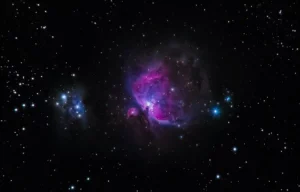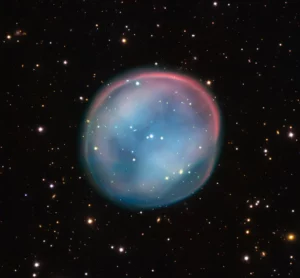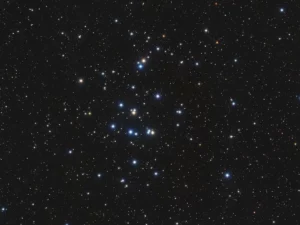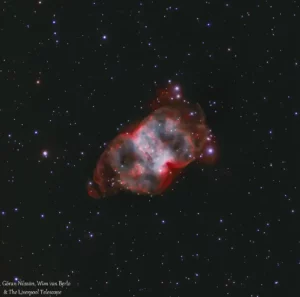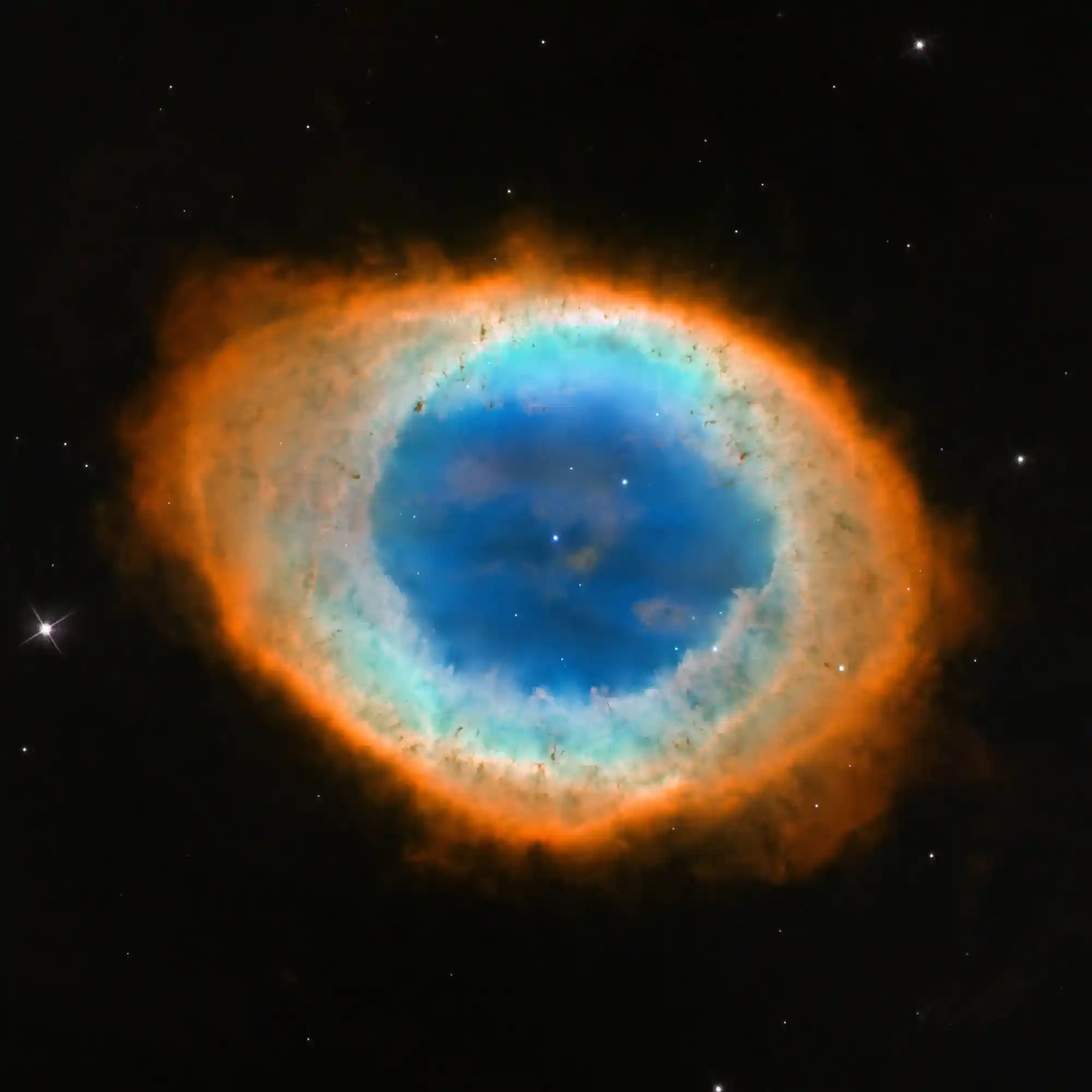
M57 The Ring Nebula– Planetary Nebula in Lyra
Despite their name, planetary nebulae have absolutely nothing to do with planets. They got their name because early observers thought they resembled the disks of Uranus and Neptune. Instead, planetaries are old, highly evolved stars which have thrown off their outer layers.
The discarded shells shine because of the ultraviolet radiation emitted by the central star, which is extremely hot (with a surface temperature which may reach up to 700,000 degrees F) and is well on its way to becoming a white dwarf.
The best-known planetary nebula is the Ring Nebula M57, easily found about halfway between Beta and Gamma Lyrae. This celestial smoke ring roughly 500 times the diameter of our solar system was discovered by the French astronomer Antoine Darquier, only a few days before Charles Messier.
He described it as a “perfectly outlined disk as large as Jupiter, but dull in light and looking like a fading planet”. This comparison to a planet may have influenced William Herschel who found that the object resembles the planet newly discovered by him, Uranus, and introduced the name “Planetary Nebulae”.
Small telescopes show M57 as a faint hazy spot, slightly larger than the disk of Jupiter. Apertures of at least 4 inches are needed to discern its ring shape and its elliptical outline. Observers using larger telescopes and high magnifications will notice a few darker zones on the eastern and western edges of the ring, and maybe some faint nebulosity inside the disk.
One thing you probably won’t see is the Ring Nebula’s central star. Of magnitude 14.7, this difficult object is 10,000 times fainter than the faintest stars visible to the naked eye.
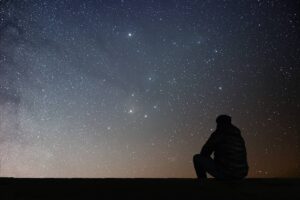
Emil, an avid astronomy writer, formerly owned and ran nightskyinfo.com, making the universe more comprehensible for his readers. He has recently handed over its reins to Tom Urbain from starlust.org, ensuring that his legacy of simplifying the stars continues to enlighten and inspire.
Discover More Deep Sky Objects to Observe🔭
This page is part of our collection of deep-sky objects articles. If you enjoyed the read, then you’ll love the following articles.

